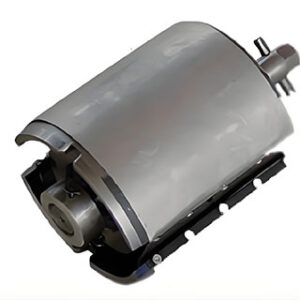pipeline repair services
Pressure Pipeline Hot Tapping

Pressure pipeline hot tapping is a method of creating connections on pipelines and vessels without interrupting service. It is widely used for maintenance, modification, and emergency repairs in pipelines carrying water, crude oil, refined oil, chemicals, natural gas, and other media.
This technology offers a safe, eco-friendly, cost-effective, and efficient solution for in-service pipeline repairs, reducing downtime and environmental risks.
Pressure Pipeline Hot Tapping Technology
This advanced technology enables operations on pressurized pipelines and vessels without shutdowns, ensuring uninterrupted production and material supply.
Key Applications Include:
- Hot tapping on pipelines carrying flammable/explosive media
- Pressure tapping for inert material pipelines
- High-pressure steam line hot tapping
- Operational temperature range: T ≤ 300°C (572°F)
- Operational pressure limit: P ≤ 10.0 MPa (1,450 psi)
- Compatible with various pipe materials including steel, PE, and concrete (Φ32mm-Φ2000mm)
- Available in both hydraulic and manual operation modes
Tapping Orientations:
- Vertical pipeline tapping
- Fixture-assisted pipeline tapping
- Angled pipeline tapping
- Inverted pipeline tapping
- Storage tank tapping


Pipeline Pressure Plugging Technology
This process is designed for maintenance, emergency repairs, pipeline replacement, and station upgrades in pressurized transmission systems.
Mechanical Plugging Techniques
The primary methods include hanging plugging, barrel-type plugging, folding plugging, and inflatable (bag-type) plugging, each suited for different operational conditions.
Flow-Dependent Plugging Options
Depending on whether the pipeline media must remain flowing, operations are classified as stoppage plugging (flow interruption) or non-stoppage plugging (continuous flow).
Field Execution Strategies
Projects may involve single plugging, double plugging with dual blocking, or quad plugging with quad blocking, selected based on risk assessment and system requirements.
Technical Specifications
Compatible Pipes: Steel, cast iron, ductile iron, and PE/PVC (DN25–DN2600).
Media Types: Refined oil, natural gas, water, ethylene, coal gas, medium oil, and jet fuel (non-corrosive).
Operating Ranges: Temperatures from -30°C to +250°C; pressures up to 6 MPa.
Custom solutions are available for extreme conditions (high temp/pressure, corrosive media).

Barrel-Type Pipeline Plugging
Barrel-type plugging utilizes a cylindrical milling cutter with multiple blade teeth on one end and a connection to a perforating machine on the other. This method involves cutting a saddle-shaped hole and an inner-diameter-type hole on the pipeline to be sealed. A round rubber shell is then inserted into the pipeline center using specialized machinery. The shell’s annular surface undergoes radial, elastic, and plastic deformation to deflect the flow medium across the pipe cross-section.
Barrel-type hot tapping and plugging is ideal for long-distance pressurized pipelines transporting crude oil, natural gas, and refined petroleum products, as well as emergency pipeline repairs. It offers secure sealing, high pressure resistance, and rapid construction.



Folding-Type Plugging
Folding plugging utilizes a collapsible mechanism in the plugging head, enabling small-diameter access holes to seal large pipelines. This innovative method significantly reduces operational workload and improves efficiency, making it ideal for low-pressure, large-diameter pipelines and confined workspaces. It’s commonly applied in water supply mains and gas pipeline isolation projects.


Barrel Expansion Plugging

The barrel expansion plugging method operates by first using a pipe-cutting machine to make a full-diameter cut on the target pipeline. A plugging device then inserts an expandable barrel through the cut opening, positioning it centrally within the pipeline. The barrel is mechanically expanded using the plugging device’s built-in drive system, effectively blocking the medium flow.
This technique’s key advantage lies in its full-diameter cutting approach, which ensures reliable sealing even when dealing with deformed pipes or pipelines containing debris – maintaining consistent performance where conventional methods might fail.


On-Site Machining Services
On-site machining refers to mechanical processing operations performed directly at equipment installation, maintenance, or specific project locations. Our company provides comprehensive on-site machining solutions, including:
- Marine and offshore engineering machining
- On-site boring and taper hole machining
- Flange face machining and measurement
-
Oversized flange milling operations




